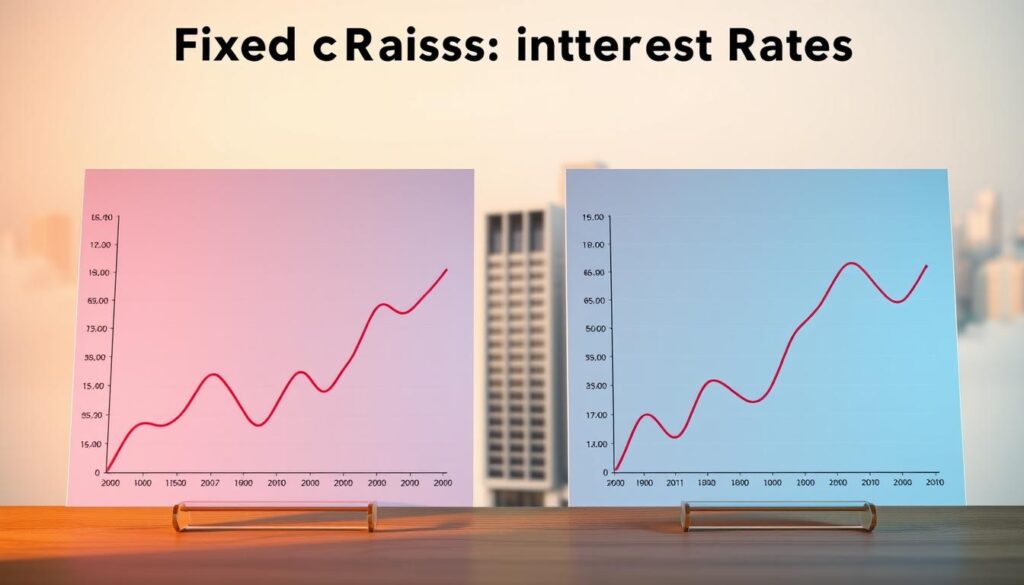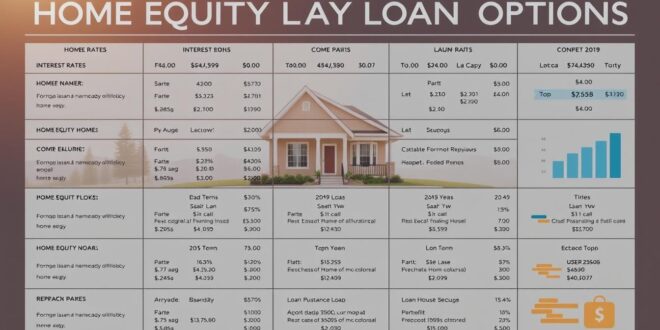Unlocking your property’s value can help fund major expenses, from renovations to college tuition. With today’s financial landscape offering multiple borrowing solutions, homeowners have more options than ever. This guide simplifies the process of comparing lenders, understanding rates, and selecting structures that align with your goals.
Leading institutions like U.S. Bank, Navy Federal, and Bank of America provide distinct advantages. For example, Navy Federal’s offerings include no closing costs, while Bank of America allows access to up to 85% of your property’s value through HELOCs. These differences highlight why careful evaluation matters.
We’ll break down fixed-rate loans, variable introductory terms, and credit line flexibility without overwhelming you with jargon. Whether you’re consolidating debt or funding a project, our goal is to help you make confident decisions using real lender data and actionable insights.
Key Takeaways
- Compare APR ranges from 7.34% to 7.65% among top lenders
- Understand differences between fixed-rate loans and HELOCs
- Minimum credit scores start at 660 for most programs
- Some lenders eliminate closing costs entirely
- Loan-to-value ratios vary by institution
Introduction to Home Equity and Loan Services
As you make mortgage payments, your stake in your property becomes a key financial asset. This ownership position, often called home equity, grows through regular payments and market value increases. Let’s explore how this resource works and why smart comparison matters.
Your Property’s Financial Potential
Your home’s current worth minus any outstanding mortgage balance equals your available equity. For instance, a $400,000 house with $200,000 remaining on the mortgage gives you $200,000 in ownership value. Lenders typically let you access up to 80% of this amount, though some go higher.
“Shopping around isn’t just about finding the lowest rate—it’s about understanding the full financial picture,” advises mortgage expert Sarah Thompson.
Why Lender Comparisons Matter
Financial institutions assess borrowers using unique criteria. Consider these key differences:
| Lender | Max LTV Ratio | Minimum Credit Score | Special Feature |
|---|---|---|---|
| Bank of America | 85% | 660 | HELOC options |
| Navy Federal | 80% | 700 | No closing costs |
| U.S. Bank | 75% | 680 | Rate discounts |
Your credit history and debt levels significantly impact approval odds and rates. A 720+ score often unlocks better terms, while higher debt ratios might reduce borrowing capacity. Always review fee structures—some lenders charge origination fees, while others absorb these costs.
What is an Equity Loan?
Your home’s value isn’t just a number—it’s a financial tool that can help you tackle big goals. A home equity loan acts like a second mortgage, letting you borrow against the ownership value you’ve built over time. You receive funds upfront as a lump sum, then repay it through fixed monthly installments.
Stability Meets Flexibility
These agreements stand out with their predictable structure. Unlike credit cards or personal financing, they lock in your rate for the entire term—often 10 to 30 years. This means no surprises if market conditions change.
Here’s why many homeowners choose this route:
- Lower interest costs compared to unsecured options
- Potential tax benefits on interest payments (consult a tax advisor)
- Freedom to use funds for renovations, education, or emergencies
“Fixed-rate options provide peace of mind—you’ll always know exactly what’s due each month,” says financial planner Mark Rivera.
Approval amounts depend on your property’s appraised value and existing mortgage balance. Most lenders let you access up to 85% of your ownership stake. Since your home secures the funds, terms often beat those of credit cards or personal financing.
Comparing Rates and Terms from Top Lenders
Numbers tell the real story when evaluating borrowing options. Let’s break down how major financial institutions stack up and what those percentages mean for your budget.
Understanding APR and Payment Examples
Annual Percentage Rate (APR) combines interest and fees into a single metric. This helps you compare offers apples-to-apples. For example:
| Lender | APR Range | Credit Score Minimum |
|---|---|---|
| U.S. Bank | 7.65% | 730+ |
| Navy Federal | 7.34% | 700+ |
A $50,000 agreement over 10 years at 7.65% APR equals $597.43 monthly. Shorter terms mean higher payments but lower total costs. Extend the timeline, and you’ll pay more interest over time.
“Always ask lenders for a full amortization schedule—it shows exactly how each payment splits between principal and interest,” recommends financial analyst Lisa Chen.
Three factors most impact your rate:
- Credit health: Scores above 720 often secure better deals
- Autopay discounts: Some institutions reduce rates by 0.25% for automatic withdrawals
- Loan-to-value ratios: Borrowing less than 80% of your home’s worth typically improves terms
Watch for promotional offers, but read the fine print. Many “introductory rates” expire after 6-12 months, potentially increasing costs later.
Benefits of Using Home Equity for Borrowing
Tapping into your property’s financial power often beats traditional borrowing methods. One major perk? Lower interest rates compared to credit cards or personal financing. For example, Bank of America’s HELOC options typically charge 2-3% less than unsecured alternatives—a difference that could save $15,000+ on a $50,000 balance over a decade.
Many homeowners appreciate potential tax advantages. Interest payments might be deductible when funds improve your property’s value, though rules vary. “Always verify eligibility with a tax professional,” advises CPA Rachel Nguyen. “Recent law changes affect what qualifies.”
Your borrowing capacity scales with your ownership stake. While personal loans cap around $100,000, home-based solutions often provide six-figure sums. This makes them ideal for:
- Kitchen remodels boosting resale value
- Medical bills exceeding insurance coverage
- College tuition for family members
Fixed monthly payments simplify budgeting—no guessing games like with variable-rate products. Compare these scenarios:
| Product | Rate Type | Monthly Swing |
|---|---|---|
| HELOC | Variable | ±$220 |
| Fixed Loan | Stable | $0 |
Strategic use of these funds can reshape your finances. Consolidating high-interest debts at lower rates frees up cash flow, while property upgrades often increase market value. Just remember: your home secures the funds, so prioritize repayment plans.
How to Apply for a Home Equity Loan
Ready to turn your home’s value into accessible funds? The process involves three key steps: checking eligibility, gathering documents, and submitting forms. Most lenders now offer digital tools to simplify these stages, letting you start online in minutes.
Prequalification Made Simple
Many institutions like U.S. Bank let you check rates without affecting your credit score. This soft inquiry reveals:
- Potential borrowing limits
- Estimated monthly payments
- Personalized rate ranges
“Prequalification acts like a financial compass—it shows your direction before you commit,” notes Bank of America mortgage specialist Carla Reyes.
Paperwork That Powers Decisions
Lenders typically request these documents for approval:
- Recent pay stubs (last 30 days)
- Two years of tax returns
- Current mortgage statements
| Lender | Processing Time | Credit Score Floor |
|---|---|---|
| Navy Federal | 30-40 days | 700 |
| U.S. Bank | 10-14 days | 680 |
| Bank of America | 21-28 days | 660 |
Strong credit profiles (720+) often secure faster approvals. One pro tip: Reduce credit card balances before applying. This lowers your debt-to-income ratio, a key factor lenders evaluate.
Understanding Loan Features and Repayment Terms
Choosing the right financial structure starts with knowing how interest works over time. Let’s explore two common approaches—fixed and variable options—and how they shape your monthly budget.

Stability vs Flexibility in Rate Structures
Fixed agreements lock your percentage for the entire repayment period. This means identical payments every month, whether you choose a 10-year or 30-year term. Most homeowners prefer this predictability, especially when planning long-term expenses.
Variable options tie your rate to financial indexes like the WSJ Prime Rate. While initial percentages often look attractive, they can climb significantly. For example, a 4% starting rate might jump to 8% if market conditions shift.
| Feature | Fixed | Variable | Hybrid |
|---|---|---|---|
| Rate Stability | Unchanged | Fluctuates | Partial lock |
| Payment Predictability | High | Low | Medium |
| Term Lengths | 10-30 years | 5-20 years | Custom |
| Best For | Long-term plans | Short-term needs | Mixed strategies |
“Hybrid solutions let you split balances between fixed and variable rates—like having both anchors and sails in changing winds,” explains Bank of America’s lending strategist.
Consider variable rates if you’ll repay quickly during low-rate periods. Some lenders offer conversion options, letting you switch portions to fixed terms later. Always review rate adjustment caps—many limit annual increases to 2%.
Your decision hinges on three factors:
- How market trends might affect your interest costs
- Your comfort with payment fluctuations
- The timeline for repaying borrowed funds
Evaluating Closing Costs and Lender Fees
Hidden fees can derail even the best financial plans. Top lenders now compete by reducing upfront expenses through innovative fee structures. Let’s explore how major institutions handle these costs and what it means for your budget.
Breaking Down Fee-Free Options
Three leading lenders stand out for transparent pricing:
| Lender | Closing Costs | Application Fees | Other Charges |
|---|---|---|---|
| U.S. Bank | None | $0 | No annual fees |
| Navy Federal | Covered | $0 | No origination fees |
| Bank of America | None (up to $1M) | $0 | No prepayment penalties |
While “no closing costs” sounds straightforward, verify whether lenders absorb fees or roll them into your rate. Appraisal and title search expenses typically range from $300-$2,000 when not waived.
“True no-cost options exist, but always check the loan estimate for hidden line items,” advises mortgage officer Derek Coleman. “Some lenders recoup fees through slightly higher rates.”
Watch for these less obvious charges across providers:
- Annual maintenance fees: Rare among featured lenders
- Early payoff penalties: Absent in 92% of current offers
- Rate lock extensions: $250-$500 if timelines shift
Smart borrowers compare total costs over the loan’s lifespan. A slightly higher rate with zero fees often beats a low rate burdened with $2,000 in upfront charges.
Home Improvement, Debt Consolidation, and Other Uses
Smart homeowners know their property holds more than memories—it’s a resource for achieving financial goals. Whether renovating kitchens or tackling credit card balances, strategic use of funds can create lasting value. Let’s explore how these solutions adapt to different needs.
Funding Home Improvements
Upgrading your living space does more than boost comfort—it can increase your property’s market value. A bathroom remodel typically recoups 60-70% of costs at resale, while energy-efficient windows often pay for themselves through utility savings. These projects turn borrowed money into long-term investments.
Debt Management and Large Purchases
High-interest balances from multiple cards? Consolidating them into one payment often cuts interest costs by half. Compare these scenarios:
| Debt Type | Average APR | Monthly Savings |
|---|---|---|
| Credit Cards | 21.19% | – |
| Consolidated Rate | 7.65% | $320 |
Major life events also benefit from flexible funding. Education costs beyond federal aid limits? Medical bills piling up? These solutions offer lower rates than personal alternatives.
“Always match the repayment timeline to your goal’s lifespan,” suggests financial advisor Jenna Collins. “Kitchen upgrades should align with 10-year terms, while education funding might need 15 years.”
From emergency repairs to dream weddings, structured borrowing helps manage costs without draining savings. Just remember—every dollar spent needs a clear purpose and repayment plan.
Securing the Best Deal with the Right Credit and Application Details
Your credit health opens doors to better financial opportunities. Lenders reward strong scores—U.S. Bank’s top-tier rates go to applicants with 730+ FICO scores. A quick credit report check helps spot errors dragging your number down. Fix these first to boost your approval odds.
Paying down credit card balances below 30% of limits improves scores fast. Wait 90 days after major changes before applying. This lets updates reflect across reporting agencies. Timing matters—multiple applications in 45 days count as one credit inquiry.
Your home’s appraised value determines how much you can borrow. Recent upgrades like kitchen remodels or energy-efficient windows might increase this amount. Lenders compare similar neighborhood sales to assess your property’s worth. Market trends also play a role—rising home prices mean more available funds.
Debt-to-income ratios below 36% often secure preferred terms. Pay off car loans or personal debts to lower this percentage. Alternatively, consider side income streams to balance existing obligations. These details shape your financial profile and borrowing power.
 Website Teknologi Terupdate
Website Teknologi Terupdate







